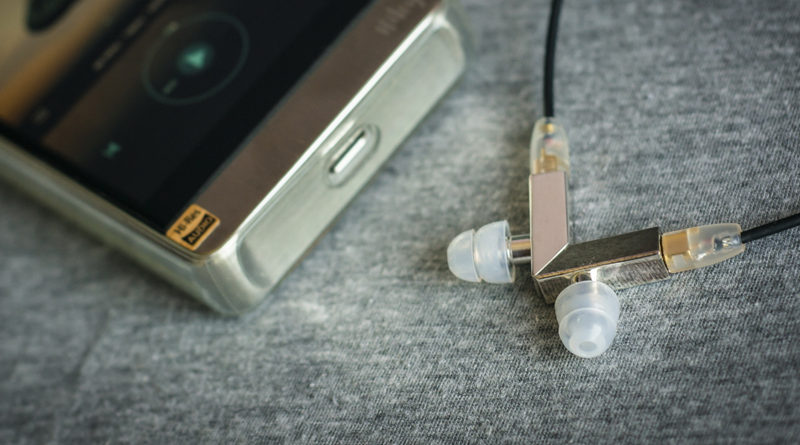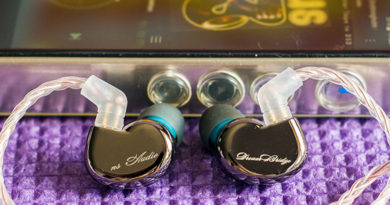Ourart Tini — sparkling and clear


One of the least common and most peculiar shape of IEMs nomination spotted in the wild goes to Ourart — a brand mostly respected for its excellent and breathtaking earbuds (ACG/Ti). While the first IEMs on my review (WINE) had standard bullet-like shape, Ourart Tini is far from the regular design, to the extent of some frustration when opening the box. But before going into the debris of design and fit deviations, let’s go over the specs, packaging and box contents.

Ourart Tini technical specifications:
- Shells: silver plated, 316-grade steel
- Driver type: 2x3x4mm open hole BA driver
- Sensitivity: 95dB
- Impedance: 40Ω
- Frequency Response Range: 20Hz — 20kHz
- Cable connectors: MMCX
- Audio Jack: 3.5mm, angled
- Cable Length: 1.2m
Ourart Tini available at PenonAudio store

Packaging, design and build quality:
Not sure if this part about the packaging would be correct cause I’ve received Tini IEMs as three separate pieces: storage case with IEMs, bag with all eartips and audio cable. It is not clear whether this model is always supplied like this or it should have more common packaging. Anyway, in my case Tini arrived in small white cardboard box, free of any prints, that contained beautiful polished black plastic storage case with IEMs.

First impression is like holding storage case dedicated for some precious jewelry. This feeling gets even stronger with the first glance at IEMs when opening the case. Really reminds of some pure silver studs that you’d take out of the drawer before escorting a friend to his final journey (wedding, I mean ). Just kidding. Other accessories were located in separate bags. So, the full set is like this:
- Ourart Tini IEMs
- audio cable, MMCX
- 5 pairs of two flange silicone eartips
- 2 pairs of three flange silicone eartips
- storage case

Such beautiful storage case has couple of drawbacks as for me: it collects finger prints and scratches with its polished and very soft surface and it doesn’t allow you to store IEMs together with exchangeable eartips and audio cable. Therefore, I would say that you would need something else to do the same job well.

Ourart Tini are made of steel and have shiny polished surface all around. It is a unibody construction with the only opening for MMCX cable ports at the bottom which are drowned inside the shells.

Output channels also end up with the opeinings that are protected with the aluminum grills. There are no engravings, prints or other visual elements on either channel. Either can act as Left or Right since the shape of both is the same.

One suitable design finding, apart from all other irregularities and presentation, are the beveled upper edges that allow to form the geometry when channels are placed close to each other. Some people might even have troubles with guessing what it is…

One complain from my side towards the choice of material and crafting is about the coating that looks as silver before the first contact with fingers. Gets spotted afterwards and needs constant polishing with soft cloth. Same effect is obsered with silver items — they get darker due to skin acid.

Stock audio cable is packed into pretty thick silicone braid, equipped with plastic Y-splitter, aluminum limiter, transparent resin MMCX connectors and rubber audio jack housing. Red dot at one of the MMCX connectors identifies Right channel. This cable doesn’t feel as a premium one but neither it shows any issues in terms of the build quality. Mic effect is here and quite apparent.
Fit:
At first I was afraid that such shape would have very negative effect on fit comfort. I was partially wrong. Fit-wise is totally ok despite such rectangular and sharp-edge design. The source of success with ergonomics here comes from a combination of low weight and thin profile. If I had never seen the shape before wearing — I would never tell that it differs much from bullets with wires connected at 90 degrees to the shells. The problem for some people might be in pretty short output nozzles that require 2 or 3 flanged silicone eartips instead of using regular ones. Such eartips are not that comfortable for me, furthermore, I feel that the bass portion gets partially lost unless the best position is found.

Sound quality:
Tested with HiBy R6Pro DAP
Lows and midbass:
As one can expect from a single BA driver — lows have apparent boundaries and highly emphasized textures but the reach of deep bass and the volumetric feel of it is far from any dynamic or hybrid contender. This further accompanied by the fit and use of flanged eartips. Once you’ve found the best position — lows step in and become totally evident but the lack of presence still leads to it hanging behind in the entire picture of the sound. Bass decay is fast, textures are reach, but the overall amount might have been better. Midbass is consequently given out by the sharp higher portion and lack of volume to recreate the natural drum tightness and power. It is normally exposed and balanced with mids and treble but the lower part — floor and bass drums require extra power while snare, hi-hats and crash cymbals are perfectly exposed.

Mids and vocals:
With such leaning towards the higher frequencies, mids are expectedly thin, emotional and vivid. Good that BA driver is capable of delivering extra clarity and details here instead of falling into to much lisping and screaming on female vocals when pushed to the limits. Male vocals are kept similarly reach with details but kind of slightly compromised by the excessive brightness. This cannot be called full-bodied sound, rather — sharp and cold. Strings, violins, bow movements, wind instruments — this is what Tini IEMs are capable of. Good overall dynamics, micro details and resolution + the accent on treble — all dedicate to most of the instrument and voices in mids to stand out and glisten.

Treble:
Main virtue of Tini sound is excessively clear and sparkling treble range. It is well balanced to mids but forces the extra influence there. Overall clarity and transparency of the sound is very high and reminds of other bright and crisp IEMs like LZ A6Mini with piezo driver to reproduce treble. Resolution and amount of details are exceptional which also leads to the perception of high resolving potential of Tini in overall. But the final tuning with the accent on such capable treble forms very bright and cold tonality.

Soundstage:
Ourart Tini show only a moderate soundtage due to a lack of volume in the bass region that also affects midbass positioning on stage. Instrument separation and range layering are both quite good with no tendency to mix but the width and depth of the stage are not perfectly defined in the condition of thin and cold sound.

Sound in overall:
Ourart Tini sound could be described as having cold and bright tonality, with crisp, transaprent and detailed treble, quite thin and emotional mids with no negative outcomes and high resolution, highly textured and contoured lows lacking in presence and volume. Best to be used for such genres as country, instrumentals, jazz, etc
Compared to Earnine EN1J:

EN1J are also based on single BA unit and have pretty narrow perceptional appeal in terms of different ranges. Those IEMs seem to be developed strictly for the monitoring type of use with mids plaiying the main role while both extremes are quite limited and less pronounced. Bass presence and reach is higher that in Tini but the treble is not that extended and crisp. Although, mids are perfectly exposed and there is no feel of it being thin and cold.
Compared to Rose Mini2 MKII:

Mini2 by Rose are pretty impressive IEMs concerning single BA nature, small dimensions and shape. It has better and more regular fit + the sound is less scewed towards the treble and more capable in terms of lows. I would say that Mini2 sound more balanced in overall while Tini are brighter and crispier.
Compared to Tanchjim DarkSide:

DarkSide IEMs are producing totally opposite sound — warm and dark with lots of bass presence, large bass volume and weak treble. DarkSide and Tini are like two extremes soundwise. One lacking treble, the other lacking lows. Both far from being marked neutral or balanced.

Conclusion:
Ourart Tini adds to the collection of single BA driver IEMs with different sound tuning and tonality. Bight, crisp and vivid in its nature, Tini maintain high resolving potential on mids and treble providing large amount of details and clarity of the sound. Thickness of mids and bass presence are not among the virtues compensated by the evident textures, contouring and emotional appeal. Looking at the competitor models, this one has its unique signature for those who prefer cold and bright sounding IEMs.




